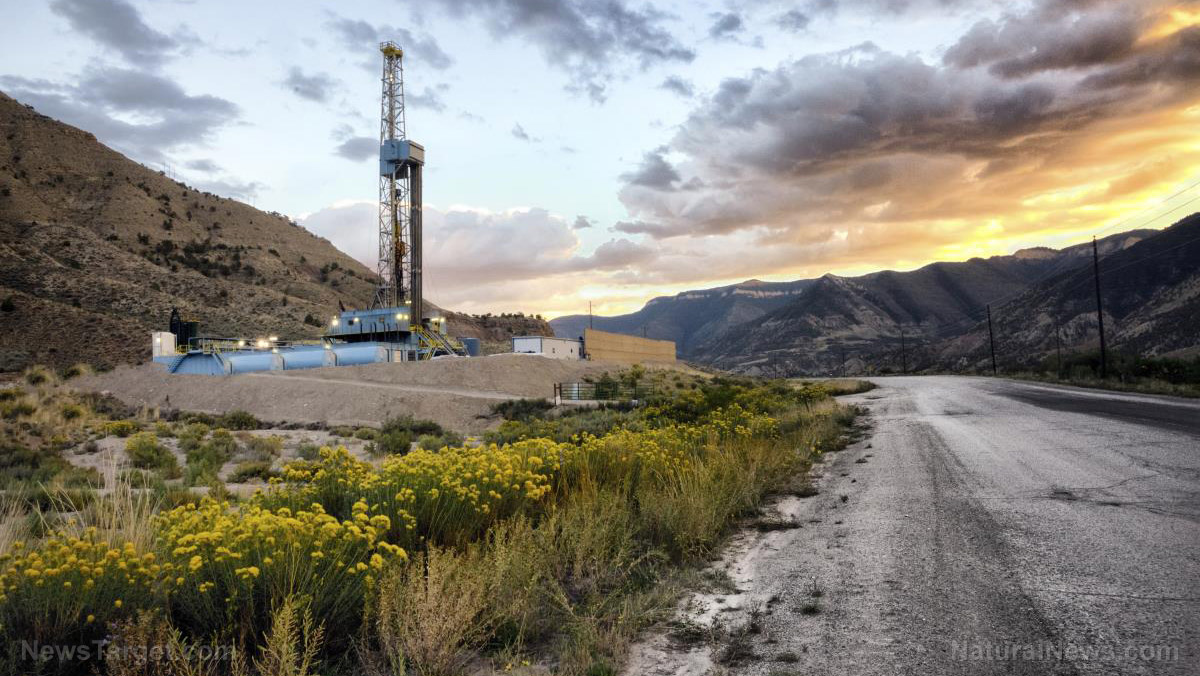Fracking found to worsen air pollution, increasing respiratory disease
02/23/2019 / By Jhoanna Robinson

Fracking has been found to negatively affect air quality in the United States.
Air pollution in the urban areas has been decreasing gradually since the 1970s. However, with the fracking boom happening around 10 years ago, the U.S. has now found itself a new source of hydrocarbons, which enter the atmosphere via compressors, pipes, separators, valves, or through exhaust vents on tanks.
This means that in recent years, there has been a flood of research to ascertain the amount of emissions from fracked oil and gas wells. There has been much talk on how methane emissions, a greenhouse gas, has been polluting the environment, but very little attention is given to air toxins.
Fracking, which is short for hydraulic fracturing, is a drilling process that induces the flow of natural gas or oil by producing fractures in rock formations which were once not lucrative to tap. This happens when drillers shatter layers of shale rock with chemicals, high-pressure water, and sand.
The hydraulic fracturing process, not counting its demand for huge amounts of water, has been dubbed as the least environmentally impactful step when it came to drilling for hydrocarbons. The processes which have more environmental effects are wastewater handling and disposal, as well as the release of vapors from oil and gas storage and distribution.
Producing, distributing, and using hydrocarbons have always at some point resulted to emissions accumulating in the air, either due to accidental or intended leaks, or during incomplete combustion of fuels. Fortunately, hydrocarbons have been significantly decreased in the last 30 years, approximately by a factor of 10.

The age of fracking employs hundreds of well pads, replacing large operations at conventional well sites. Each well pad needs the transportation of water, chemicals, and equipment to and from these well pads, while also requiring the removal of wastewater. They are not federally regulated like the large operations at conventional well sites are.
As a result, not only have truck traffic and emissions increased in shale areas, but this also paved the way for a new springboard of hydrocarbons. (Related: Fracking Pollutes Air Hundreds of Miles Away from Drilling Sites.)
How the government is failing to properly measure the amount of methane emissions in the air
A report that was released in 2011 stated that methane emissions from unconventional sources, such as fracking, were being grossly ignored, as compared with methane emissions from conventional oil and gas exploration. This is when researchers started investigating hydrocarbon emissions from fracking operations in a more diligent manner.
The Environmental Protection Agency (EPA) records the amount of methane emissions in its greenhouse gas inventory, but the numbers are based upon estimates that were developed in the 1980s and 1990s, and were self-reported by the industry. As a matter of fact, both satellite and atmospheric measurements show that the EPA estimates may be underestimating real-world methane emissions by up to a factor of 2.
When the National Oceanic and Atmospheric Administration (NOAA) took air measurements, it agreed that EPA methane estimates may be applicable to older, mature shale areas with mostly natural gas production. However, they don’t apply in younger shale areas that also drill large amounts of oil alongside natural gas, such as the Bakken in North Dakota, according to NOAA.
Ozone levels in San Antonio, Texas are trending close to the threshold of 75 parts per billion (pbb) due to the Eagle Ford shale fracking. The ozone National Ambient Air Quality Standard is currently at 70 pbb. A similar problem has also arisen in the Uintah basin in Utah due to the fracking industry.
Benzene, a carcinogenic chemical, also has its levels increasing at rural shale locations, even though the Texas Commission on Environmental Quality (TCEQ) has reported that benzene levels are below normal. 2015 data from the newest air monitor in Karnes City, Texas, at the center of Eagle Ford Shale, show that less than 40 percent of benzene is still linked to tailpipe emissions, its formerly most dominant source, and is now more and more being caused by fracking.
Discernible health impacts
Researchers note that a spate of minor health effects such as fatigue, sinusitis, and migraines, as well as hospitalization rates and birth defects have been associated with an area’s well density or a house’s distance to oil and gas wells.
Discover more ways in which toxic substances can negatively impact your health at FrackingWatch.com.
Sources include:
Submit a correction >>
Tagged Under:
Ecology, Emissions, environ, fracking, Greenhouse Gas, hydrocarbons, Methane emissions, oil and gas storage, research, respiratory disease, shale areas, wastewater handling and disposal
This article may contain statements that reflect the opinion of the author





















